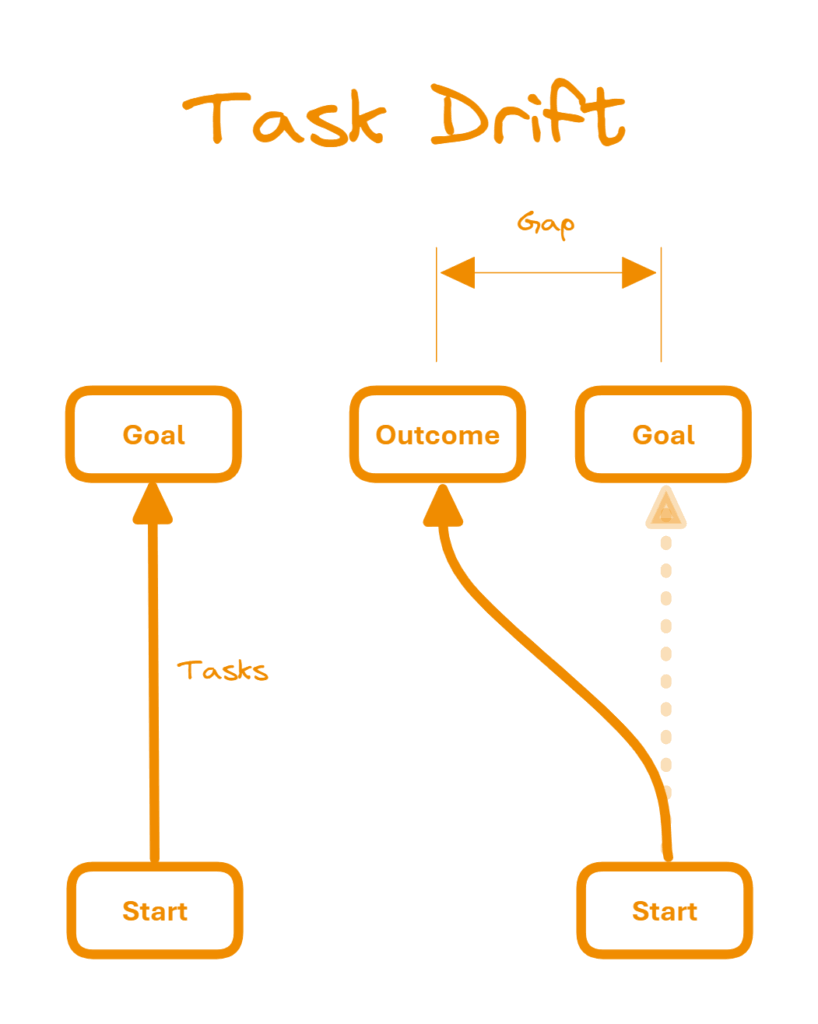Object-Oriented Project Management (OOPM) sounds like a term borrowed from software engineering. Indeed, it draws inspiration from that field, but its applications extend far beyond, influencing domains like architecture, education, research, and community initiatives.
Let’s delve into what OOPM entails, its historical roots, and how it stands apart from and synergizes with traditional project management methodologies such as Waterfall, Agile, or PRINCE2.
A Brief History of OOPM
The concept of OOPM emerged in the early 1990s, paralleling the rise of object-oriented programming (OOP) in software development. Early explorations into applying object-oriented principles to project management were documented by researchers like Mohan and Tilley, who advocated for structuring software projects using object-oriented approaches [Mohan & Tilley 1991].
Subsequent developments saw the integration of object-oriented methodologies into project management frameworks. For instance, the Rational Unified Process (RUP) incorporated object-oriented techniques to enhance software development processes [Jacobson et al. 1999]. Additionally, the Object Role Modeling (ORM) approach provided a structured method for defining roles and responsibilities within projects, emphasizing the relationships between different project entities [Reusch et al. 2012].
These foundational ideas laid the groundwork for OOPM, promoting a shift from task-centric to object-centric project planning.
Core Idea: What Sets OOPM Apart?
At the heart of OOPM lies a simple but radical shift: instead of building your project around sequential tasks, you build it around objects. An object is any meaningful unit of work or knowledge.
Examples of objects include:
- Files (e.g., documents, reports)
- Cars and machines (e.g., production units, equipment)
- People (e.g., team members, stakeholders)
- Buildings (e.g., construction phases, physical structures)
- Abstract items (e.g., goals, constraints, deadlines)
In short, everything meaningful within the project ecosystem can be represented as an object.
Each object carries properties (e.g. priority, due date, status), has relationships (e.g. prerequisites, dependencies, ownership) with other objects, and evolves over time through its own internal task list.
Through this approach, we are effectively building a digital twin of the project that mirrors the actual components, actors, and dependencies in a structured, dynamic, and queryable form.
This stands in contrast to traditional project management, which is often built on top-down, linear structures:
| Approach | Traditional PM | OOPM |
|---|---|---|
| Central unit of planning | Tasks | Objects |
| Structure | Lists, trees, or timelines | Graphs of interconnected nodes |
| Flexibility | Predefined paths | Emergent, self-updating networks |
| Perspective | Top-down planning | Systemic modeling |
| Change management | Hard to rewire | Dynamic, modular updates |
OOPM doesn’t oppose methodologies like Agile or Waterfall; instead, it offers a framework that can encompass and enhance them by focusing on the underlying structure and relationships within a project [Jacobson et al. 1999].
Example
Imagine you have to build a car. The first step would be to define the finished car as your target object. Next, you identify and list all components that make up the car—such as the engine block, seats, steering wheel, and transmission.
Each of these components becomes its own object with its own properties and task list. For example, the engine block might be linked to sub-objects like pistons, cylinder heads, and cooling systems. You keep recursively defining these subcomponents until you reach a practical implementation level—such as procurement or fabrication steps.
Importantly, subobjects are not limited to physical parts. They also include resources like personnel, expertise, tools, and even documentation needed to realize each object.

This approach ensures a consistent top-down structure while preserving local flexibility. You can work backward from your project goal, define exactly what’s needed, and assign responsibility and timelines to each object—all within a dynamic, interconnected system. In doing so, you reduce the risk of disconnected task execution and ensure that every activity contributes meaningfully to the final deliverable.
Why Work in an Object-Oriented Way?
Organizing your project as a system of living objects instead of one-way task lists introduces a number of key benefits:
- Goal orientation
Projects in OOPM begin with a clearly defined target object. All necessary supporting objects are recursively linked to this goal, creating a structured path toward completion. This approach helps prevent means-ends confusion—a common pitfall in traditional task-based planning where teams become fixated on executing sequential tasks and lose sight of the actual project outcome. Such workflows are prone to task drift, where the completion of individual tasks no longer contributes meaningfully to the original objective. By keeping the outcome central, OOPM maintains strategic alignment and minimizes wasted effort.

- Improved delegatability
Clearly defined objects and their desired end states can be handed over to team members, enabling effective task ownership and reducing the manager’s coordination burden. - Higher project quality
The tight coupling of goals and execution leads to more coherent deliverables and fewer misaligned efforts. - Flexibility in execution
By focusing on what needs to be achieved rather than how, teams gain autonomy to choose the most efficient path—especially useful in high-uncertainty environments. - Richer dependency mapping
Object relationships make dependencies explicit and traceable, improving risk management, impact forecasting, and strategic decision-making. - Improved documentation
Objects accumulate context, decisions, and history as they evolve—supporting transparency, onboarding, and audits. - Standardization and reuse
Objects often follow predefined classes, making them easy to replicate and evolve across teams and project phases. - Knowledge reuse
Once created, objects can serve as templates or reference points, preserving institutional memory and reducing startup friction for new projects. - Scalability
As complexity grows, object-based systems scale better than rigid timelines or siloed task lists—making them suitable for large, interdisciplinary efforts.
In short, by organizing your project as a system of living objects instead of one-way task lists, you unlock better reuse of knowledge, richer dependency mapping, and greater flexibility in responding to change [Cantor 1998; Dori 2002].
Limitations and when not to use OOPM
While OOPM offers significant advantages in terms of structure, flexibility, and systems thinking, it’s not always the optimal choice:
- Higher cognitive and modeling overhead
OOPM requires more upfront planning and ongoing effort to maintain object relationships. For small or simple projects, this can be unnecessarily burdensome. - Less suited for linear, procedural tasks
Well-established workflows with low variability are often more efficiently managed using sequential methods. - Tool dependency
OOPM works best with tools that support metadata, backlinks, and visual graphs. Without them, managing relationships can become difficult. - Steeper learning curve
Adopting an object-based mindset requires training and may clash with teams accustomed to task-based planning. - Suboptimal for ad hoc or urgent tasks
In time-critical situations, traditional checklists may offer faster execution. - Risk of fragmentation
Without consistent use of templates or modeling standards, object structures can become messy and inconsistent.
In summary, OOPM shines in complex, dynamic, and knowledge-intensive projects. For routine, repetitive, or highly standardized workflows, sequential task planning remains the more practical approach. in complex, knowledge-heavy environments where adaptation, reuse, and structure matter. Sequential task approaches still have an edge in routine operations, low-complexity projects, and process-driven work environments.: As complexity grows, object-based systems can scale more effectively than flat task lists.
Outro
Object-Oriented Project Management reframes how we plan, execute, and understand our work. By shifting the focus from linear task execution to goal-driven object modeling, OOPM creates clarity, context, and coherence across even the most complex projects.
It invites us to stop asking “What should we do next?” and instead ask “What needs to exist for this goal to become real?”
For teams working in dynamic, knowledge-rich environments, this approach isn’t just helpful—it’s transformative. By embracing the object-oriented mindset, you not only build better projects, you build better ways of thinking about them.
Sources
| Key | Citation |
|---|---|
| Mohan & Tilley 1991 | Mohan, S., & Tilley, S. R. (1991). An object-oriented approach to planning and managing software development projects. Journal of Systems and Software, 15(3), 239-254. |
| Jacobson et al. 1999 | Jacobson, I., Booch, G., & Rumbaugh, J. (1999). The Unified Software Development Process. Addison-Wesley. |
| Reusch et al. 2012 | Reusch, P. J. A., Khushnood, M., & Otegi Olaso, J. R. (2012). An Object Role Oriented Project Management Approach. First International Scientific Conference on Project Management in the Baltic Countries. |
| Cantor 1998 | Cantor, M. R. (1998). Object-Oriented Project Management with UML. Wiley. |
| Dori 2002 | Dori, D. (2002). Object-Process Methodology – A Holistic Systems Paradigm. Springer. |


Leave a Reply